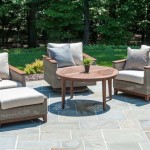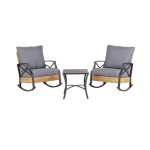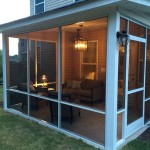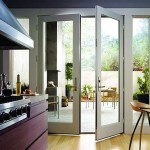Patio Ideas With Fire Pit: Creating a Warm and Inviting Outdoor Space
A patio serves as an extension of the home, offering a space for relaxation, entertainment, and connection with the outdoors. Integrating a fire pit into the patio design elevates the ambience, providing warmth, light, and a focal point that encourages social gatherings and quiet evenings under the stars. Several considerations are crucial when planning a patio with a fire pit. These include safety regulations, material selection, spatial arrangement, and aesthetic integration. Careful planning ensures that the fire pit becomes a valued addition to the outdoor living space, enhancing its functionality and visual appeal.
This article explores various patio design ideas incorporating fire pits, delving into different styles, construction materials, and safety aspects. The objective is to provide comprehensive information to aid in creating a functional, aesthetically pleasing, and safe outdoor living area centered around a fire pit.
Key Point 1: Fire Pit Styles and Materials
The selection of a fire pit style and the materials used in its construction significantly impacts the overall aesthetic of the patio and its functionality. Fire pits are available in a variety of designs, ranging from traditional wood-burning options to modern gas-fueled models. The choice depends on factors such as personal preference, local regulations, and the desired level of convenience.
Wood-Burning Fire Pits: These offer a classic, rustic appeal and provide the traditional crackling sound and aroma of burning wood. They typically consist of a simple metal bowl or a more elaborate stone or brick structure. When considering a wood-burning fire pit, it is imperative to adhere to local regulations regarding open fires and to ensure adequate ventilation to mitigate smoke hazards. Furthermore, a spark screen is crucial to prevent embers from escaping and potentially causing fires.
Gas Fire Pits: These offer greater convenience and control over the fire. They can be fueled by natural gas or propane, allowing for instant ignition and adjustable flame height. Gas fire pits are typically constructed from metal, concrete, or stone, and can be integrated into existing gas lines or connected to a propane tank. The convenience of gas-fueled fire pits makes them a popular choice for those seeking a low-maintenance option.
Propane Fire Pits: These are often portable and offer flexibility in placement. They connect to a propane tank, which can be hidden within the base of the fire pit or placed nearby. Propane fire pits are ideal for patios where a permanent gas line is not feasible. However, it's crucial to ensure adequate ventilation and safe storage for the propane tank.
Materials for Fire Pit Construction: The materials used in the fire pit's construction should be heat-resistant and durable. Common materials include:
* Stone: Natural stone, such as granite, limestone, or flagstone, offers a timeless and elegant look. Stone fire pits are durable and can withstand high temperatures. * Brick: Brick provides a classic and versatile option. It is relatively inexpensive and easy to work with. * Concrete: Concrete fire pits can be molded into various shapes and designs, offering a modern and customizable aesthetic. * Metal: Metal, such as stainless steel or copper, is a durable and heat-resistant option. Metal fire pits often have a sleek and contemporary appearance.The choice of materials should complement the overall style of the patio and the surrounding landscape. Consideration should be given to the material's ability to withstand the elements and maintain its appearance over time.
Key Point 2: Patio Layout and Fire Pit Placement
The layout of the patio and the placement of the fire pit are crucial elements in creating a functional and inviting outdoor space. The fire pit should be strategically positioned to maximize its usability while ensuring safety and traffic flow.
Spatial Considerations: The size of the patio will dictate the size and placement of the fire pit. A small patio may only accommodate a smaller, portable fire pit, while a larger patio can accommodate a larger, permanent structure. It is important to maintain adequate space around the fire pit for seating and circulation. A general rule of thumb is to allow at least 7 feet of clearance around the fire pit to accommodate seating and movement.
Traffic Flow: The fire pit should be placed in a location that does not impede traffic flow on the patio. Avoid placing it in the direct path between the house and other areas of the yard. Consider the natural pathways people will take and position the fire pit accordingly.
Seating Arrangement: The seating arrangement around the fire pit is essential for creating a comfortable and social space. Consider the number of people who will typically use the patio and provide adequate seating. Options include:
* Circular Seating: A circular seating arrangement encourages conversation and creates a sense of intimacy. * Semi-Circular Seating: This arrangement provides a more open feel while still promoting interaction. * Built-in Seating: Built-in benches or seating areas can be integrated into the patio design, providing a permanent and stylish seating solution.The seating should be comfortable and durable, able to withstand the elements. Consider using outdoor cushions and pillows to enhance comfort and add visual appeal.
Additional Considerations: When planning the patio layout, consider the surrounding landscape. Avoid placing the fire pit near trees or shrubs that could be a fire hazard. Ensure that there is adequate clearance above the fire pit to prevent damage to overhead structures or foliage. It is also important to consider the prevailing wind direction when choosing the fire pit's location to minimize smoke exposure.
Key Point 3: Safety Regulations and Best Practices
Safety is of paramount importance when installing and using a fire pit. Adherence to local regulations and best practices is crucial to prevent accidents and ensure a safe outdoor environment.
Local Regulations: Before installing a fire pit, it is essential to check with local authorities to determine any applicable regulations. These regulations may cover:
* Permitting Requirements: Some municipalities require permits for the installation of fire pits, particularly for permanent structures. * Setback Requirements: Regulations may specify minimum distances between the fire pit and property lines, buildings, or other structures. * Burn Bans: During periods of dry weather, burn bans may be in effect, prohibiting the use of wood-burning fire pits. * Fuel Restrictions: Some areas may restrict the type of fuel that can be used in fire pits.Failure to comply with local regulations can result in fines or other penalties.
Fire Safety Practices: In addition to adhering to local regulations, it is important to follow basic fire safety practices:
* Clearance: Maintain a clear area around the fire pit, free of flammable materials such as dry leaves, grass, and branches. * Supervision: Never leave a fire unattended. Always have a responsible adult present to supervise the fire. * Extinguishing: Keep a water hose, bucket of water, or fire extinguisher nearby to extinguish the fire in case of emergency. Ensure the fire is completely extinguished before leaving the area. * Spark Screen: Use a spark screen to prevent embers from escaping the fire pit. * Ventilation: Ensure adequate ventilation to prevent the buildup of carbon monoxide when using gas-fueled fire pits.Material Safety: When selecting materials for the fire pit and surrounding patio, choose heat-resistant and non-combustible options. Avoid using materials that could melt, warp, or release toxic fumes when exposed to heat.
Maintenance: Regularly inspect the fire pit for any signs of damage or wear and tear. Repair or replace any damaged components to ensure safe operation. Clean the fire pit regularly to remove ash and debris, which can contribute to fire hazards.
By following these safety regulations and best practices, homeowners can enjoy the warmth and ambiance of a fire pit while minimizing the risk of accidents and ensuring a safe outdoor environment for themselves and their guests.
Integrating a fire pit into a patio design requires careful consideration of style, materials, layout, and safety. Choosing the right type of fire pit, placing it strategically, and adhering to safety guidelines will create a beautiful and functional outdoor space for relaxation and entertainment. With thoughtful planning and attention to detail, a patio with a fire pit can become a cherished extension of the home.

30 Best Stone Patio Ideas For Your Outdoor In Backyard Browse A Lot Of Photos Seating Area Fire Pit

Best Fire Pit Ideas Heated Backyard Retreat Designs Natural Brick Stone Depot

24 Fire Pit Ideas In Your Backyard For Perfect Summer Nights

14 Outdoor Fire Pit Ideas To Upgrade Your Backyard
Fire Pit Ideas For Any Budget

12 Best Outdoor Fire Pit Ideas Diy Backyard

Backyard Patio With Fire Pit Ideas For Every Budget

60 Fire Pit Ideas And Diys
:strip_icc()/101485341-5099849194654a31be884d4b119be6bc.jpg?strip=all)
These 10 Firepit Seating Ideas Will Make Your Outdoor Space Cozy

40 Best Flagstone Patio Ideas With Fire Pit Hardscape Designs
Related Posts








